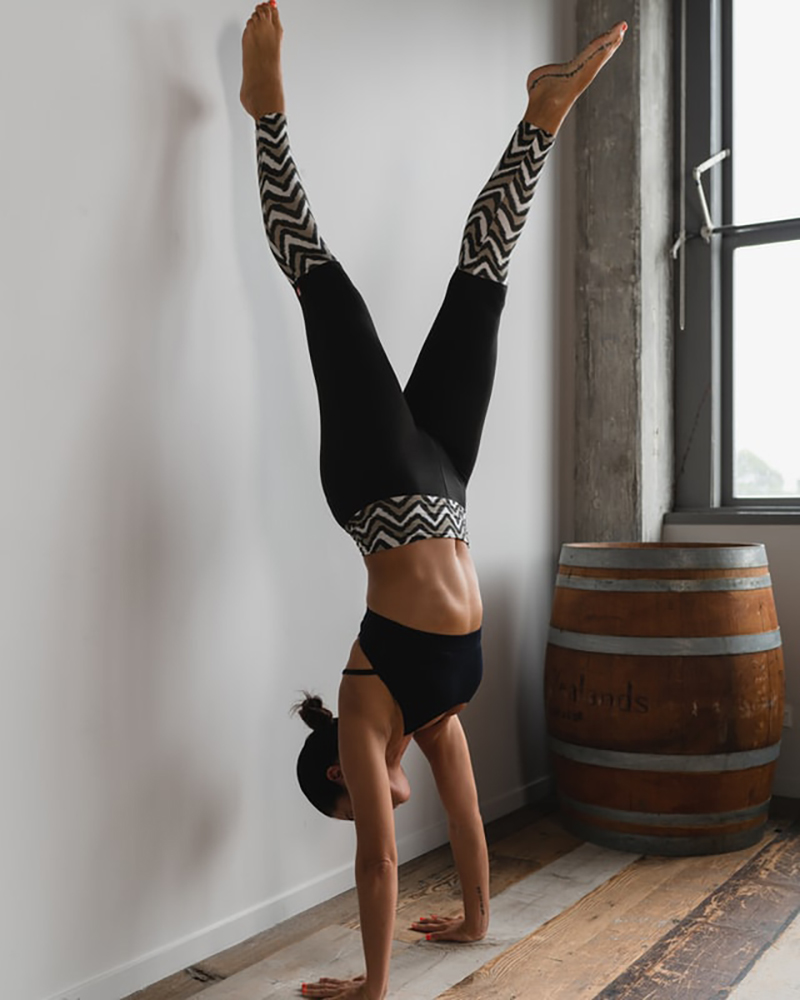


A few things come to mind when thinking about at-home workouts. First off it’s hard to ignore that not having to lug around an extra set of clothes, shoes, or worry about making it to class on time is undeniably convenient. Not to mention, there’s no more rushing to get to the studio early to ensure you’ll be close to the instructor. Besides that, another layer of comfort is being in your own home which typically means barefoot. With all of the barre and HIIT workouts that are easily streamable, the question of wearing shoes arises. Is it necessary to wear shoes at home while working out?
Most workouts, especially at home workouts, support going barefoot. Shoes do a lot of the heavy lifting when it comes to stabilization in our feet. And over time, shoes can contribute to weakness in structures including the arches, toes, and ankles potentially broadening your chance for ankle injuries, shin splints, or knee afflictions. Your feet are the foundation of your body and when you use them properly you’re able to amplify muscle fibers throughout your body to help you move more weight and receive muscle-building benefits. By strengthening your feet, you’re able to escalate the strength of the core, hip, legs, and once the body assimilates and becomes more attuned to its changing positions, it will mobilize the surrounding muscles to help balance the body. Below are some at-home workouts that are preferred to do without shoes.
Barefoot Exercises:
1.Yoga
2.Breathwork
3.Barre
4.Pilates
5.Dance of Any Sort
6.Strength Training (excluding high-impact)
It’s paramount to wear shoes while participating in any exercise that requires jumping, lifting, or any other high-impact modalities as they will preserve the feet and joints. There’s limited research on this topic however, in this study it was found that when squatting barefoot, lifters were able to activate leg muscles to a greater degree when they squat with shoes, however, this only occurred during the person’s lowering phase. If you experience injuries that aren’t related to workouts then it’s best to wear shoes as a shoe will help lessen the pain and allow you to still be mobile and continue to exercise. Below are a few at-home workouts that should always be done with shoes.
Shoe Required Exercices:
1.High-Impact Training
2.Weight Training
3.Circuit Training
4.HIIT
If barefoot training is a viable option for you, taking care of your feet is significantly critical. To ensure your feet are still getting the care they need without shoes, do not wear socks, or have wet/oily feet while working out. If you do feel you need more support, wearing grippy socks can dramatically help. Also, lacrosse or even tennis balls can help alleviate any tight muscles or tension. Be sure to consult with your physician before seeking any new training modality.
自宅トレーニングについて考えるといくつかのことが思い浮かびます。 まず、余計な服や靴を持ち歩いたり、時間どおりにレッスンに行く必要がないこと。これは、間違いなく自宅で行う方が便利です。 言うまでもなく、インストラクターよりも早くスタジオに到着する必要はもうありません。 それに加えて、自身の家で裸足でいられる事は別次元の快適さです。 簡単にストリーミングできるバレエとHIITのトレーニングなどで靴を履かないといけないのかという疑問が発生します。 自宅トレーニングでは靴を履く必要はあるのでしょうか?
ほとんどのトレーニング、特に自宅でのトレーニングは、裸足での移動をサポートしています。 靴は、足の安定性を考えると多くの負荷を与えます。 そして、時間の経過とともに、靴はアーチ、つま先、足首などの構造の衰弱な一因となる可能性があり、足首の怪我、シンスプリント、または膝の苦痛につながる可能性があります。 足は身体の基礎であり、適切に使用すると、身体全体の筋繊維を増幅して、より多くの体重を動かし、筋肉増強のメリットを得ることができます。 足を強化することで、コア、ヒップ、脚の強度を高めることができます。身体が変化に順応すると、周囲の筋肉を動かして身体のバランスを整えます。 以下は、靴なしで行うのことが好ましい自宅でのトレーニングです。
裸足で行うエクササイズ:
1.ヨガ
2.呼吸法
3.バレエ
4.ピラティス
5.あらゆる種類のダンス
6.筋力トレーニング(高負荷の物を除く)
ジャンプ、リフティング、またはその他の影響の大きいモダリティを必要とするエクササイズに参加するときは、足と関節を保護するため、靴を履くことが最も重要です。 このトピックに関する研究は限られていますが、この研究では、裸足でしゃがむと、リフターが脚の筋肉を活性化できることがわかりました。 もしトレーニングとは関係のない怪我をした場合は、靴を履くのが最善です。靴を履くと痛みが軽減され、動き続けて運動を続けることができます。 以下は、常に靴で行う必要があるいくつかの自宅でのトレーニングです。
靴に必要なエクササイズ:
1.インパクトのあるトレーニング
2.ウェイトトレーニング
3.サーキットトレーニング
4.HIIT
裸足でのトレーニングが実行可能な選択肢である場合、足のケアは非常に重要です。 靴を履かなくても足に必要なケアを施されるように、靴下を履いたり、運動中に足が濡れたり油っぽくなったりしないようにしてください。 さらなるサポートが必要だと感じた場合は、滑りにくい靴下を履くと劇的に役立ちます。 また、ラクロスやテニスボールでさえ、筋肉の緊張を和らげるのに役立ちます。 新しいトレーニング様式をはじめる前には、必ず医師に相談してください。